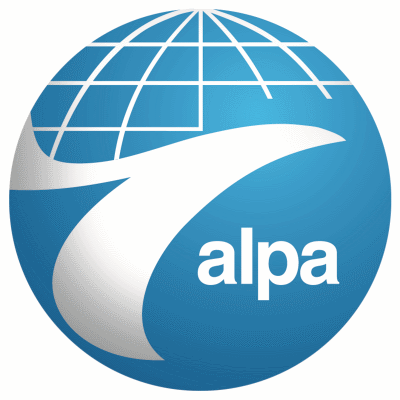Says Such Videos Are Of Minimal Value
Cockpit Image Recorders (CIR) refers to the use of video cameras to record events in cockpits. Some proponents, including the NTSB, advocate the installation of CIRs in commercial airliners. NTSB states that CIRs will benefit accident investigations and improve safety by providing new information for investigators.

While on the surface these may appear to be reasonable and justifiable claims, ALPA contends that closer examination proves otherwise.
According to a white paper posted on the union's website, current technology already provides investigators with the tools they need to determine the causes of airline accidents. The digital flight data recorder (DFDR) can record hundreds of parameters ranging from basic values such as altitude and speed, to details such as rudder pedal position, the position of every switch, and even the onset of smoke alarms in the lavatory. The cockpit voice recorder (CVR) provides an audible recording of voices, radio transmissions, and sounds in the cockpit. Investigators have a wide array of analytical techniques to tease information out of forensic evidence from the wreckage and other sources. While any accident will leave unresolved questions, the fact is that it is extremely rare for investigators not to be able to reach the findings and conclusions necessary to determine the cause of an accident. Video imaging would add virtually nothing of real value to the investigative process, and could, due to its
subjective nature, actually lead investigators down the wrong path.
"Contrary to popular opinion, compared to the precise data provided by the DFDR and forensic evidence, video imaging is an imprecise form of information. If an image shows a pilot’s hand moving toward a switch or moving his or her leg, that does not prove that he/she activated that switch or made an input to the rudder, whereas the DFDR will show the exact state of each switch, the exact amount of rudder input. Given the proper sensors, the DFDR can even distinguish between the pilot pushing on the pedal and the pedal pushing on the pilot–a distinction impossible to determine with video," the union states in the document.
The goal of accident investigation is not to solve accidents for its own sake, but to improve safety by preventing accidents. Recent developments in data analysis (from accidents, from analysis of data recorded in a separate data recording system used primarily for maintenance, and from voluntary event reporting systems) have shifted the emphasis in accident prevention toward proactive "data mining" methodologies that are far more effective in accident prevention. Again, the precise accident data combed from DFDRs and other sources is far more useful than the problematic, subjective interpretation of video recordings, the union says.

"While CIR will be of minimal value in analyzing and preventing accidents, it represents a major invasion of privacy for pilots," ALPA contends. "Having your every move recorded by video cameras is bad enough. Despite strong U.S. laws protecting CVR and CIR tapes from public access, they can be played in court in some circumstances. Tort lawyers will find video recordings to be an irresistible gimmick to increase damage claims for pain and suffering and for alleged negligence. Far worse, though, is the prospect of an accident outside U.S. territory. A CVR tape from a U.S. accident in Colombia has already been played in the US media after the network obtained a copy from sources there. Despite proposals to encrypt images, no encryption scheme is 100 percent secure, especially with continued advances in computer technology. Once out in the open, a video recording can be made available on the Web from anywhere in the world, 24 hours a day, forever. As one pilot bluntly stated, 'I don’t want my
spouse and children and grandchildren and a million strangers to be able to watch me die.' "
ALPA says that pilots accepted cockpit voice recorders because they have proved to be valuable, and sometimes indispensable, additions to accident investigation and prevention. The combined data from CVRs, DFDRs and other forensic evidence has proved to be the right solution for modern accident investigation and prevention. "CIR provides no significant additional benefits, while inflicting a far greater invasion of privacy than CVR recordings.
"While onboard video cameras may prove to be of some limited use, such as allowing pilots to see exterior views of the aircraft, ALPA is opposed to any use of video recording in the cockpit."
However, writing in Forbes, contributor Ashley Nunes takes a different view. He likens cockpit video recorders to body cameras worn by officers in some police departments. Nunes says that video images could be very helpful to accident investigators by recording what the pilots are actually doing. Such images could help investigators piece together the precise sequence of events leading up to an accident. He said that pilot unions such as ALPA are opposed to the cockpit cameras because they could give airline management an opportunity to see how pilots work in the cockpit, and might show them texting, napping, or simply not following standard procedures.
(Image from file)
 ANN's Daily Aero-Linx (04.16.24)
ANN's Daily Aero-Linx (04.16.24) Aero-News: Quote of the Day (04.16.24)
Aero-News: Quote of the Day (04.16.24) Airborne 04.10.24: SnF24!, A50 Heritage Reveal, HeliCycle!, Montaer MC-01
Airborne 04.10.24: SnF24!, A50 Heritage Reveal, HeliCycle!, Montaer MC-01 Airborne 04.12.24: SnF24!, G100UL Is Here, Holy Micro, Plane Tags
Airborne 04.12.24: SnF24!, G100UL Is Here, Holy Micro, Plane Tags Airborne-Flight Training 04.17.24: Feds Need Controllers, Spirit Delay, Redbird
Airborne-Flight Training 04.17.24: Feds Need Controllers, Spirit Delay, Redbird




